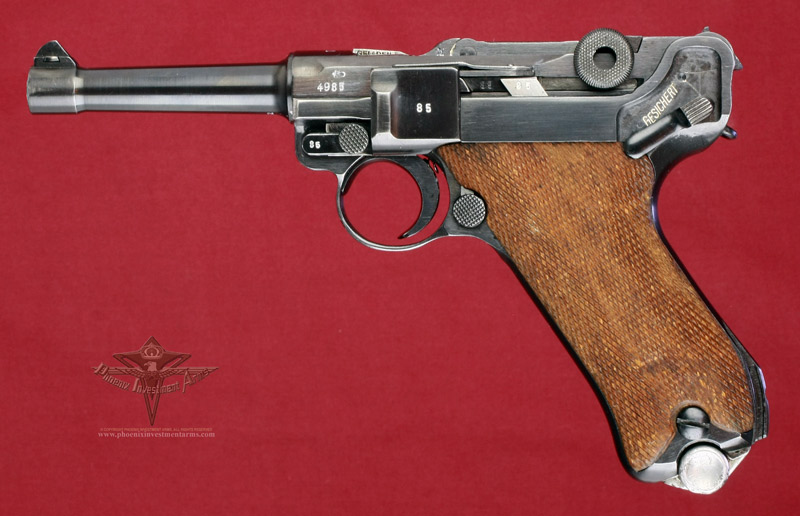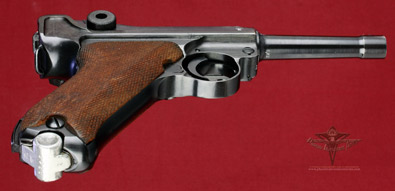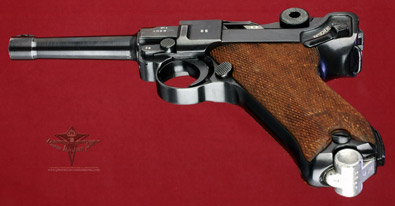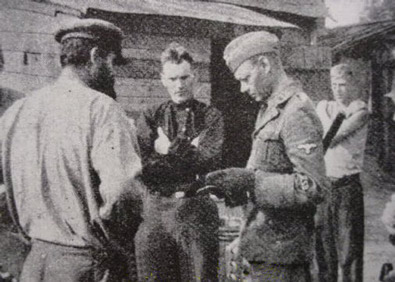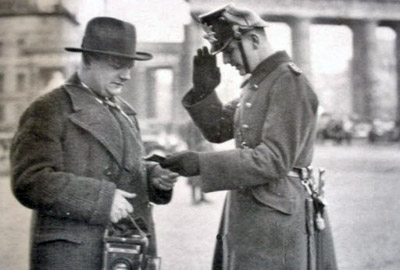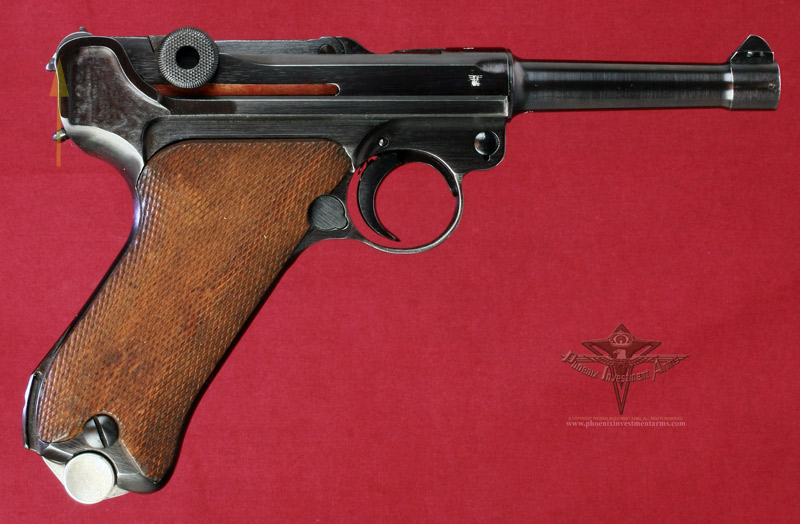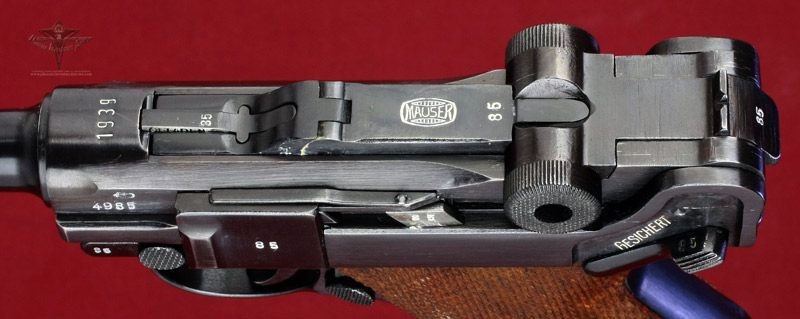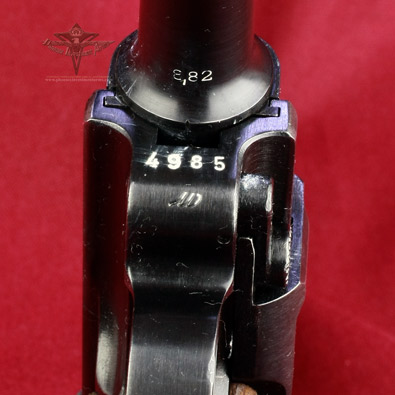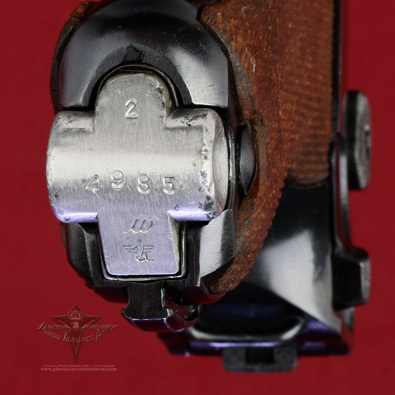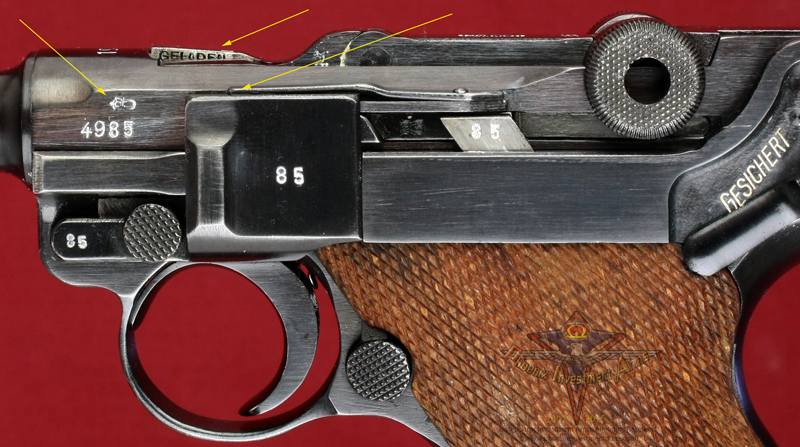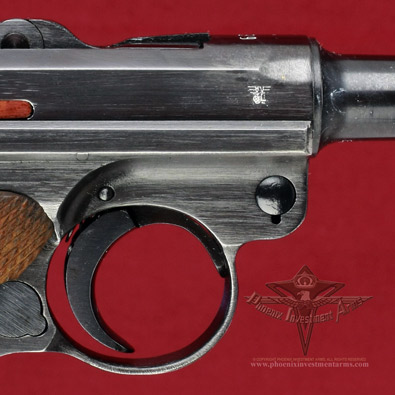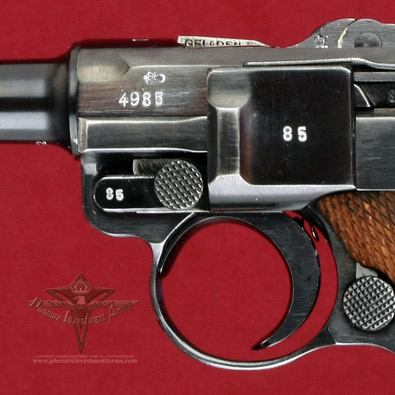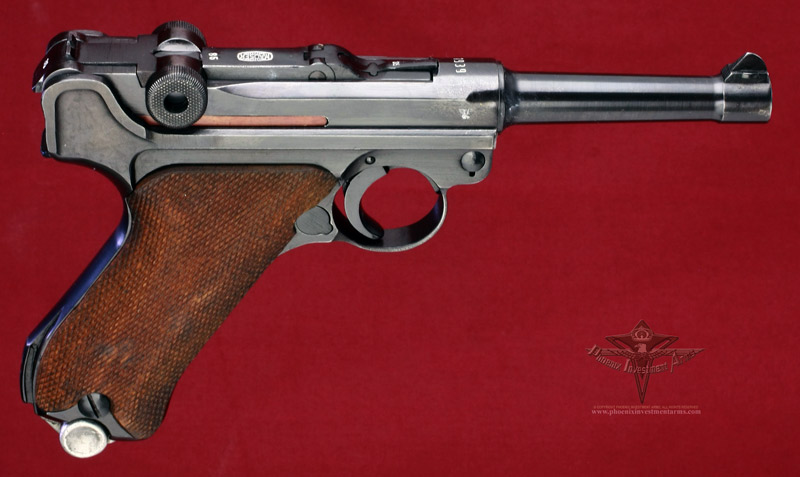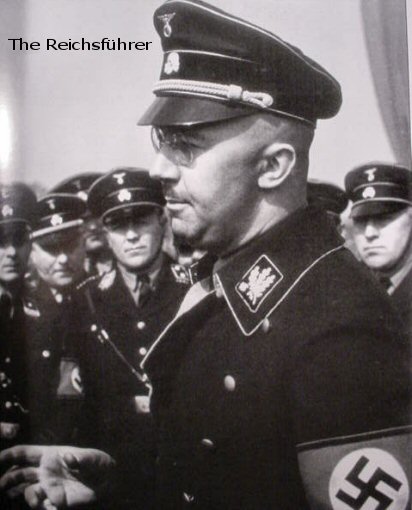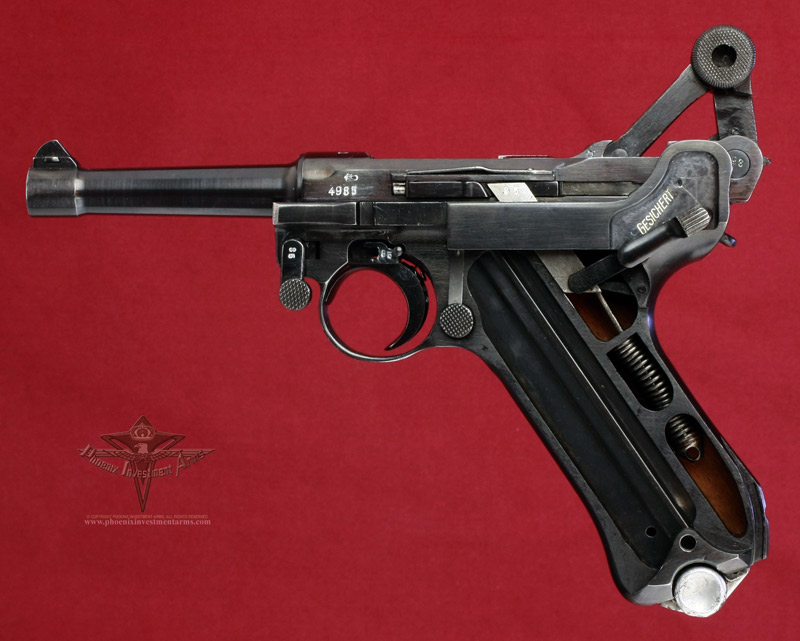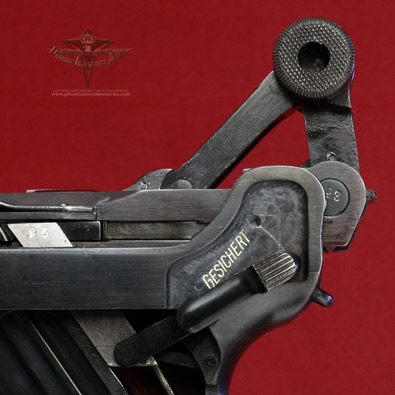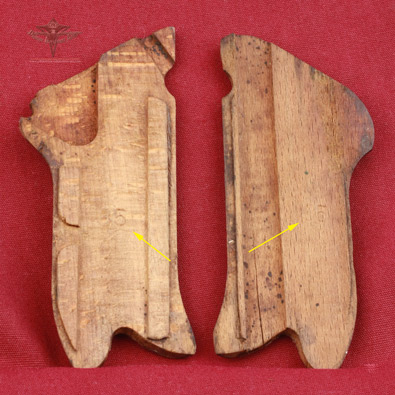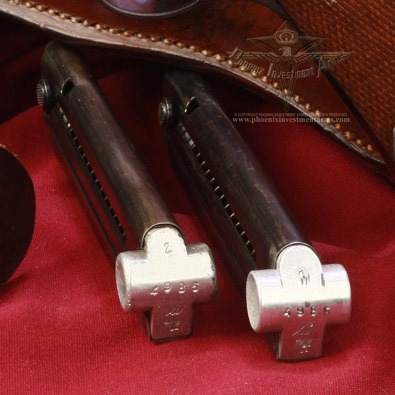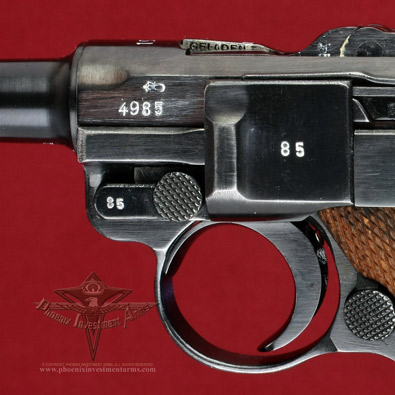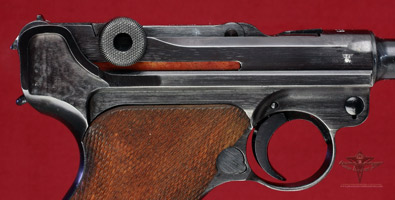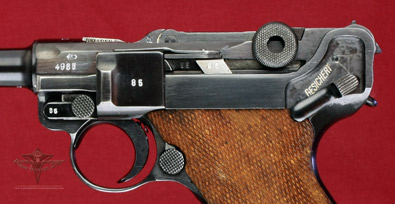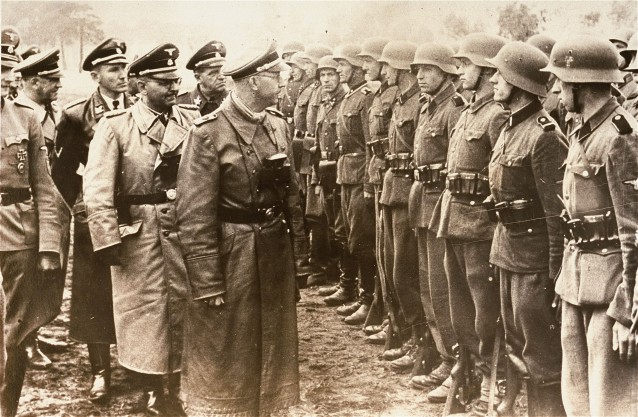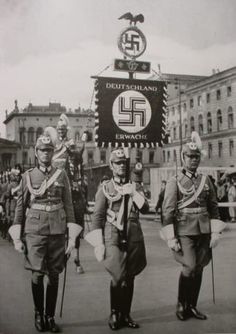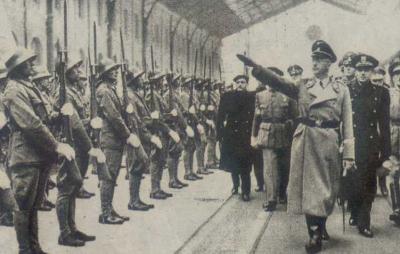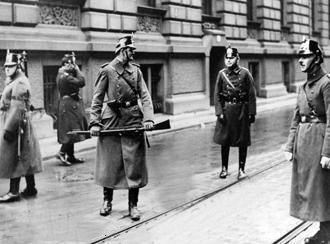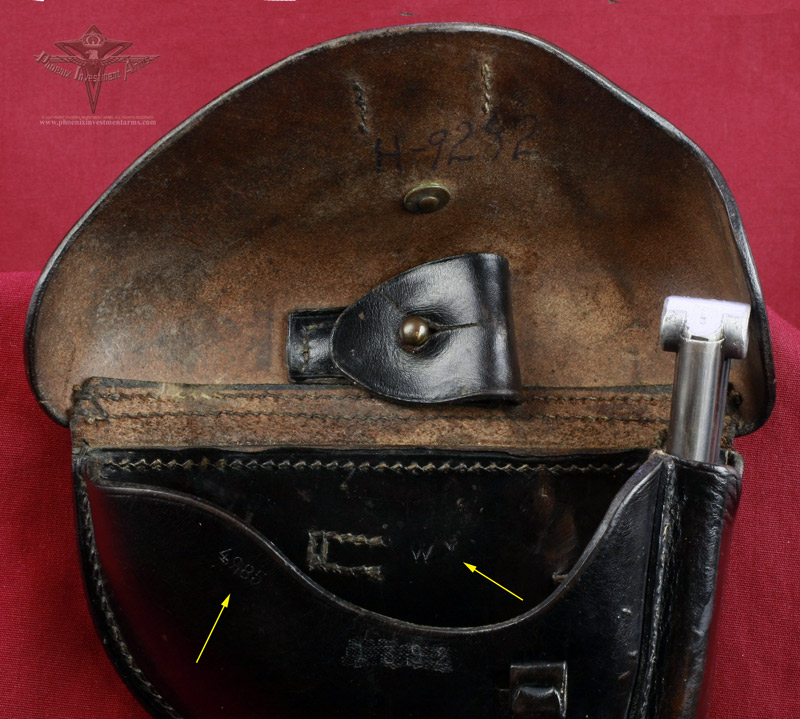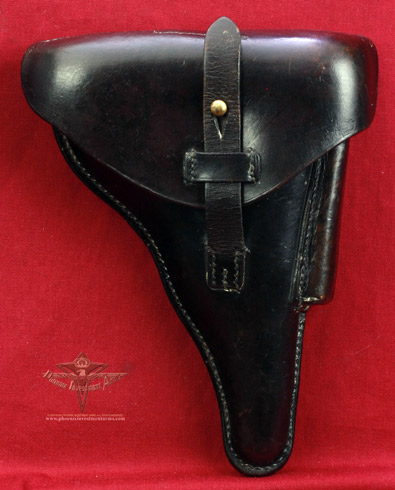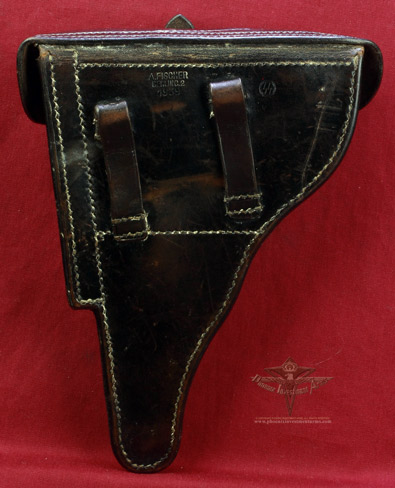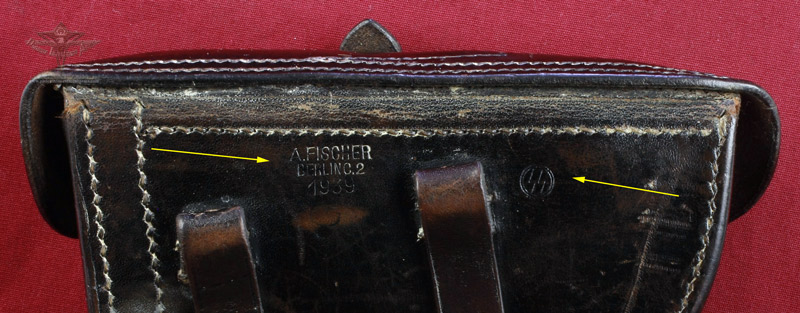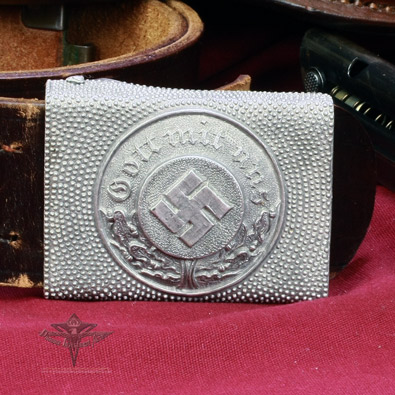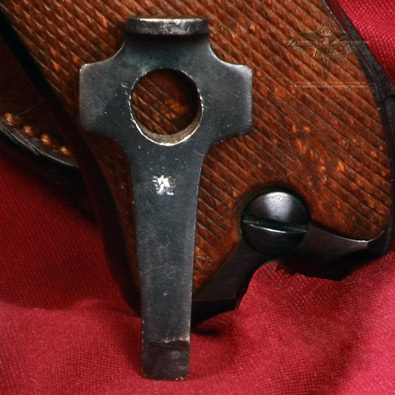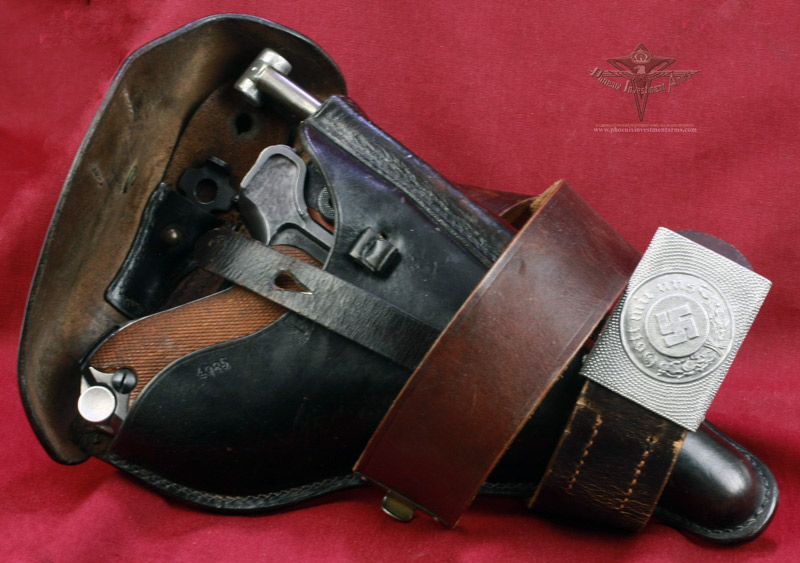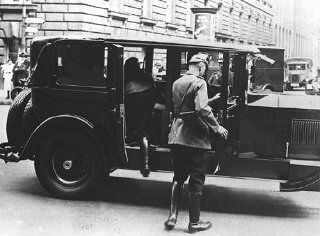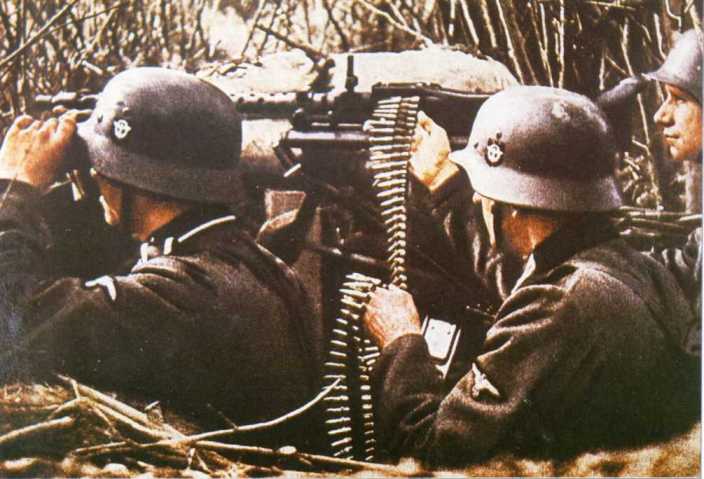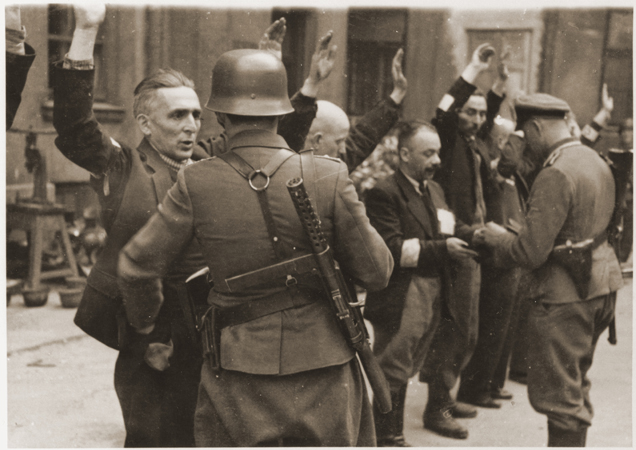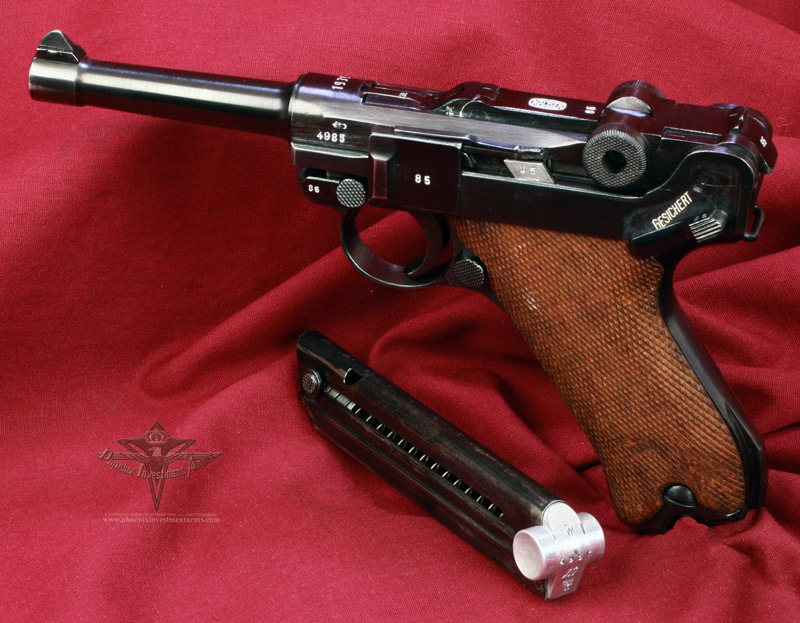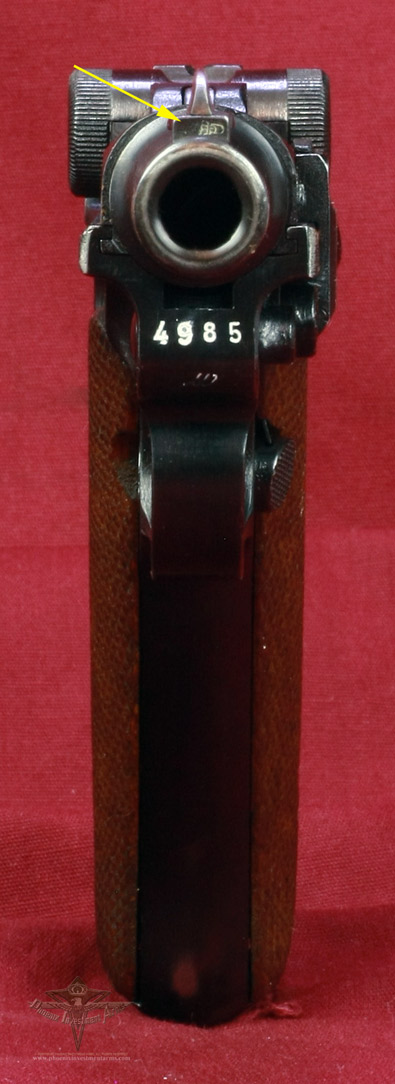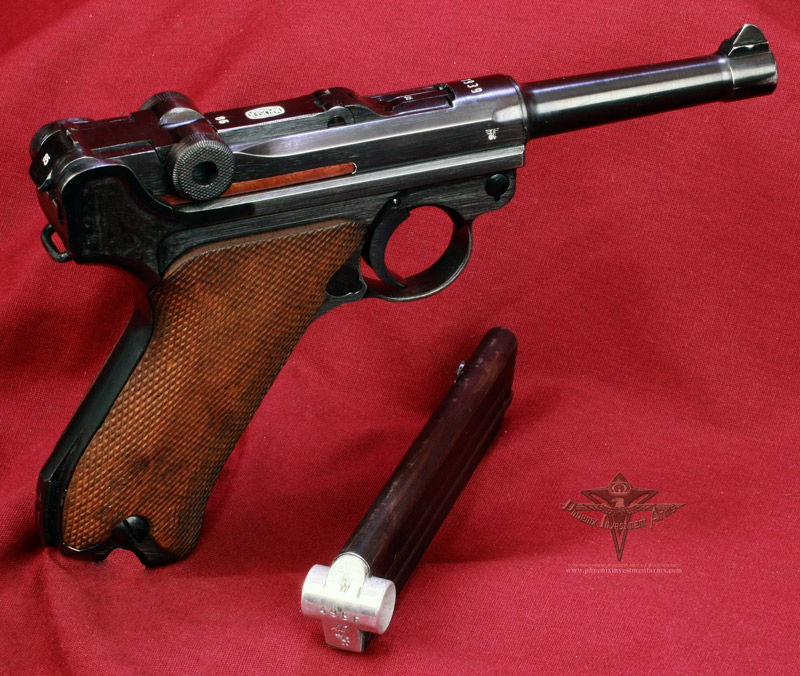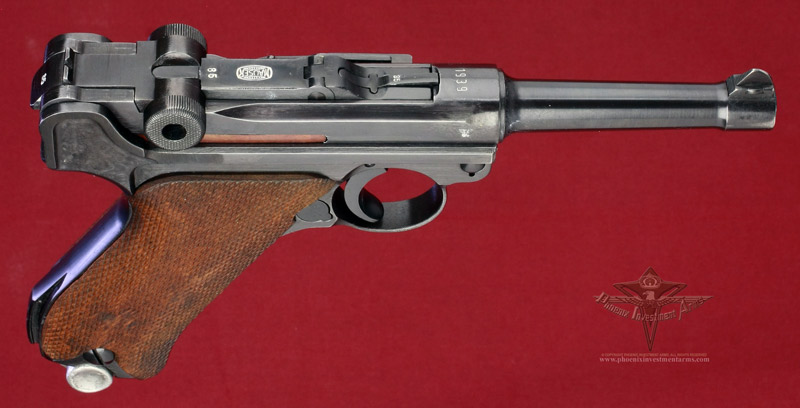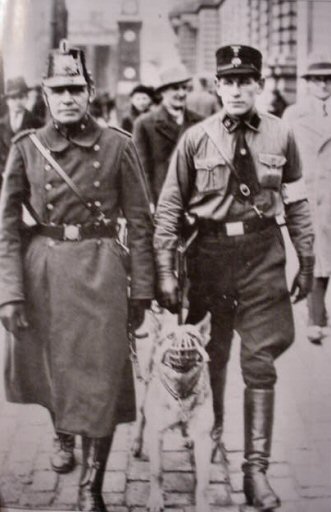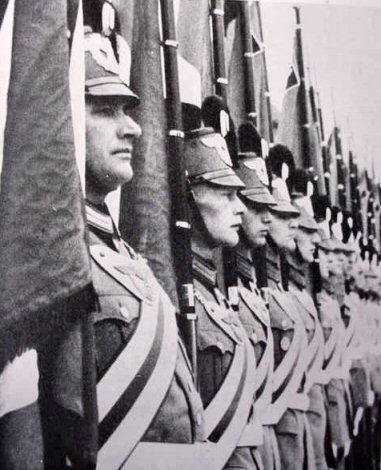1939 Banner SS Police SOLD
PHOENIX INVESTMENT ARMS - PREMIUM COLLECTOR LUGERS
Genuine German Luger - Largest Variety of Lugers Offered
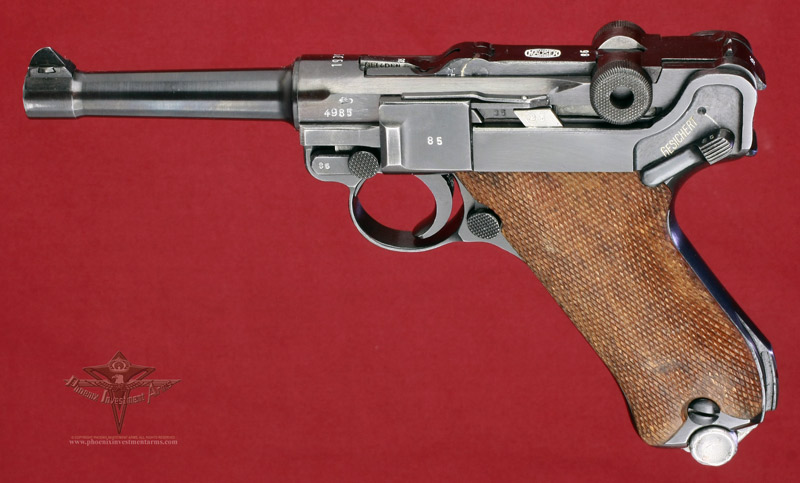 |
|
This is a 1939 Chamber dated Mauser Banner built for the German Police. This Parabellum is 9mm with a 4" (100mm) barrel that is proofed and serial numbered to the gun. Serial number placement is in the military ("exposed") style. The thumb safety is marked "Gesichert" and extractor "Geladen." This example has all matching numbers. It comes with a matched date 1939 holster, proofed loading tool, a second matching magazine and a Nazi Police (Polizei) belt buckle and belt. A true find with all matching gun. (1856) |
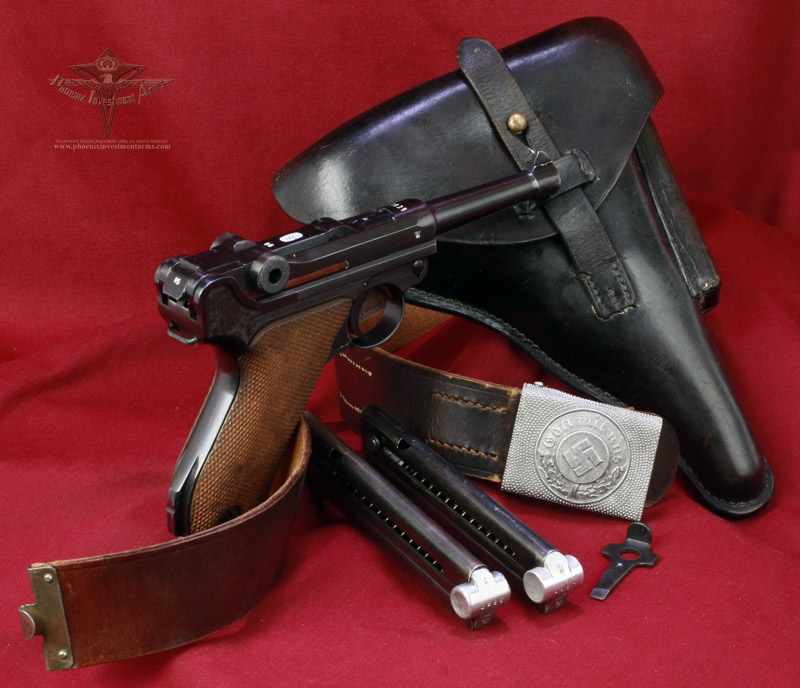 |
|
NOTE: Photographs taken today with the high mega-pixel camera show more than we sometimes can see with the human eye. Magnified close-ups show us tool marks and natural surface conditions that one normally doesn't see in the ordinary handling of the weapon. Photographs are copyrighted, all rights reserved, any extraction, reproduction or display of gun pictures without the express consent of the Phoenix Investment Arms is strictly prohibited. Thank you for your cooperation. Please visit Legal (tabbed) for Conditions of Sale. |
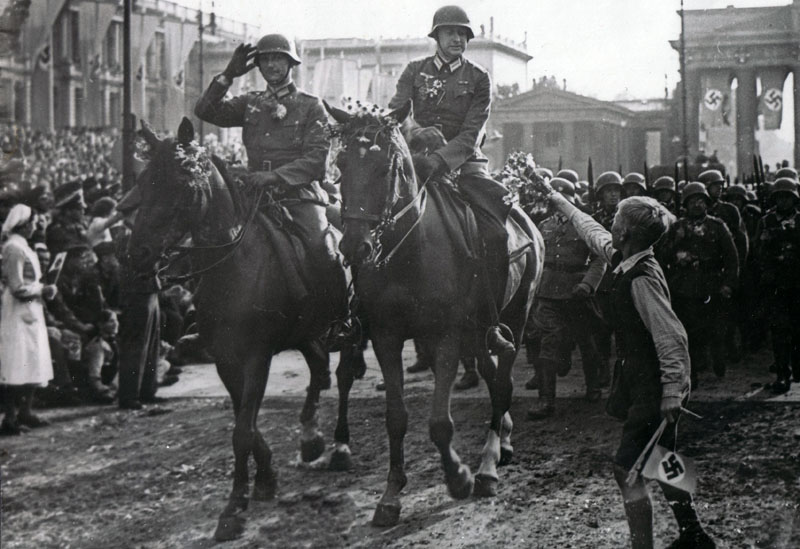
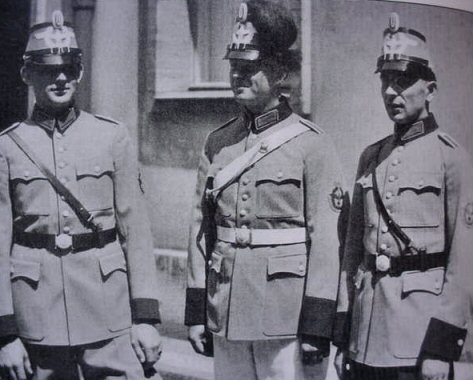 The
German police (Polizei) began as a series of local constabularies and were
assembled into State Police
The
German police (Polizei) began as a series of local constabularies and were
assembled into State Police
